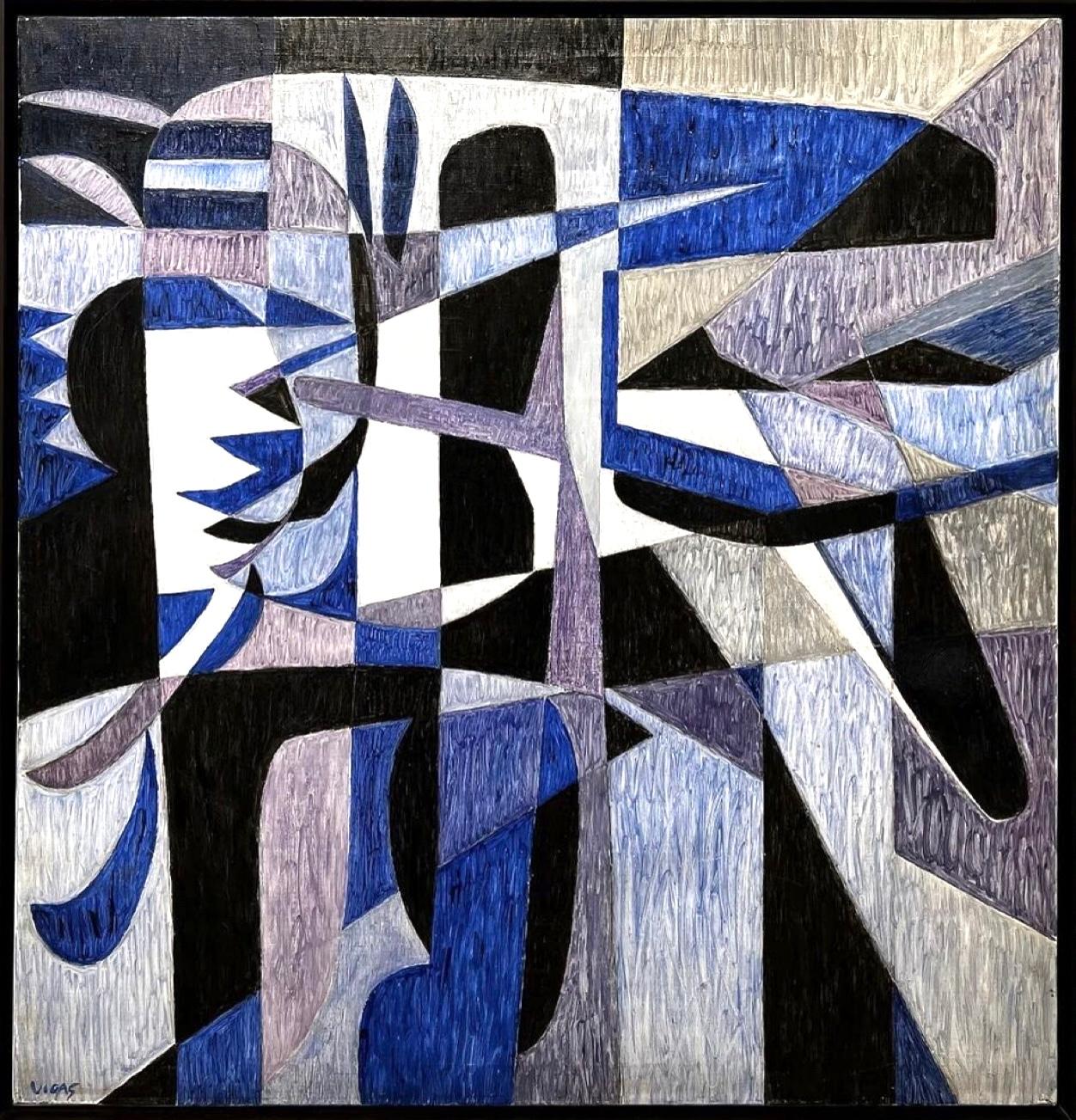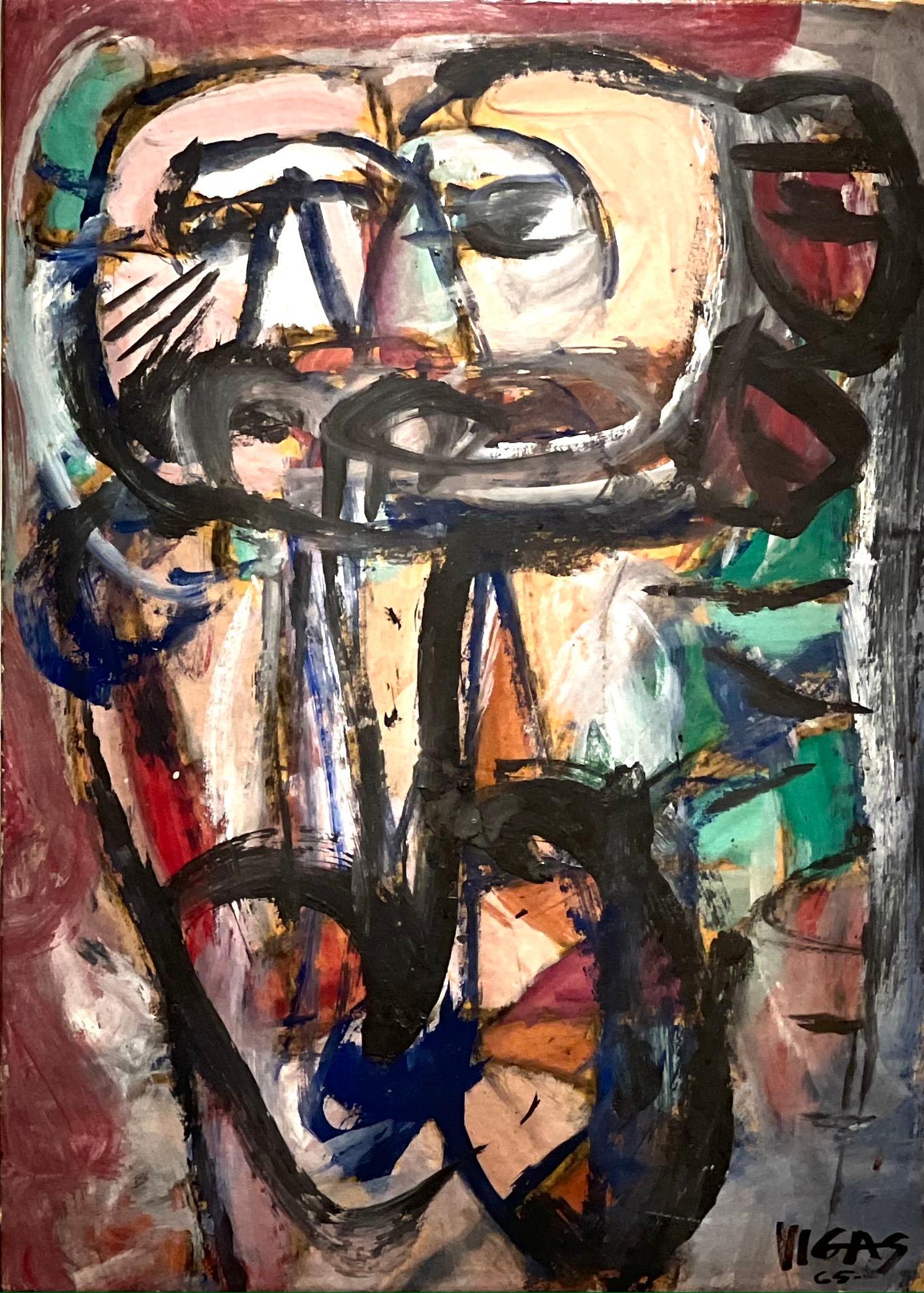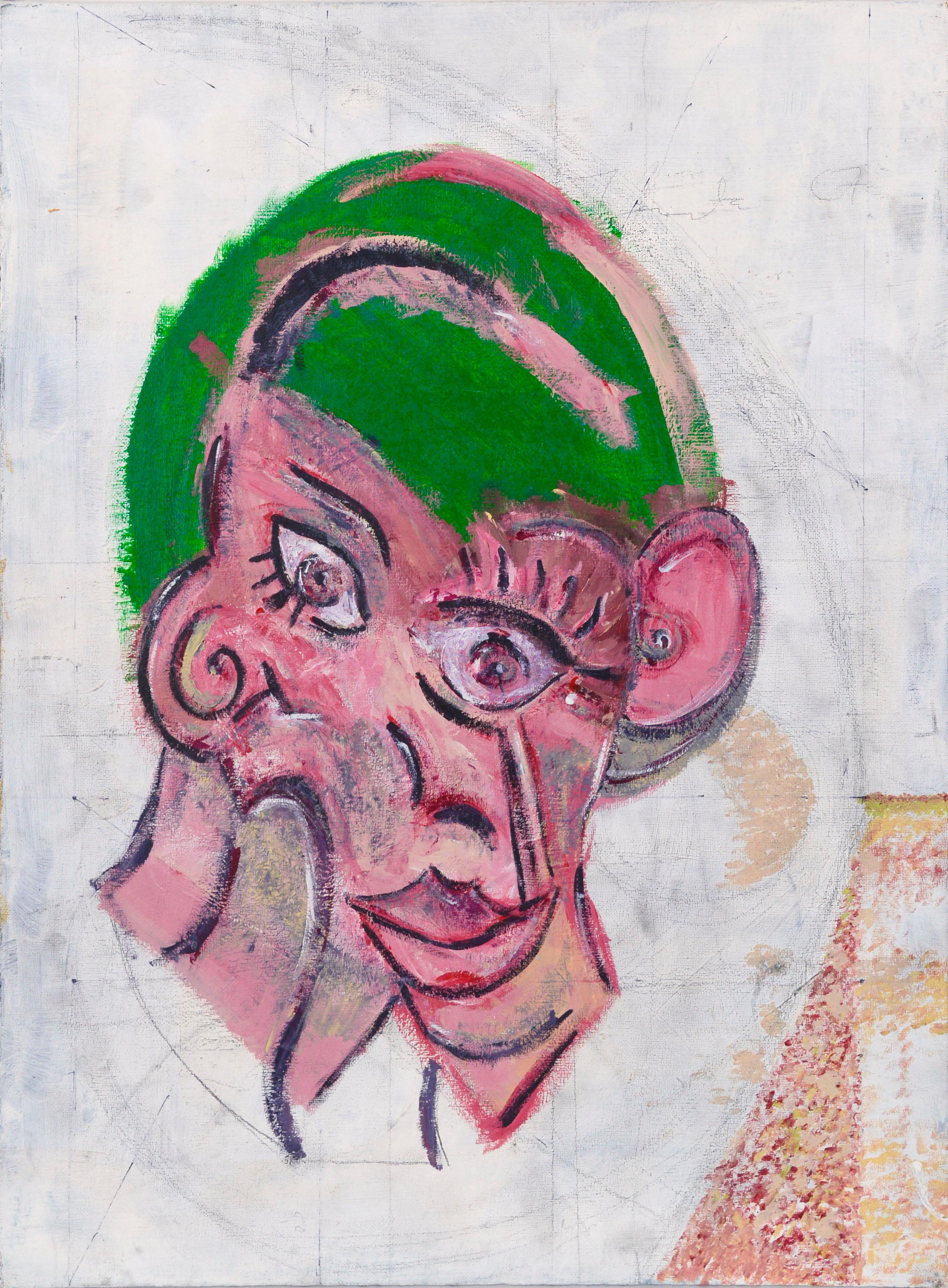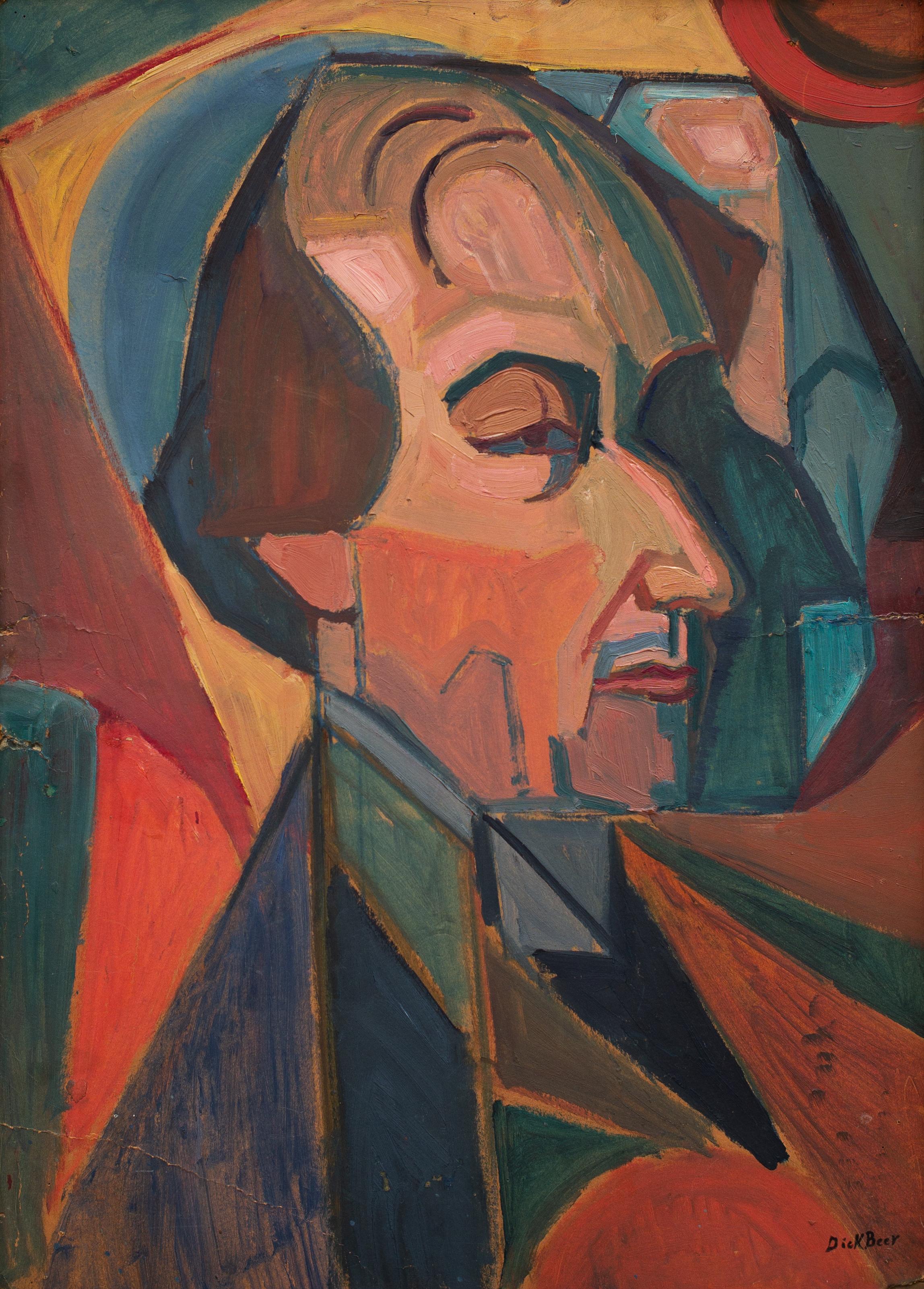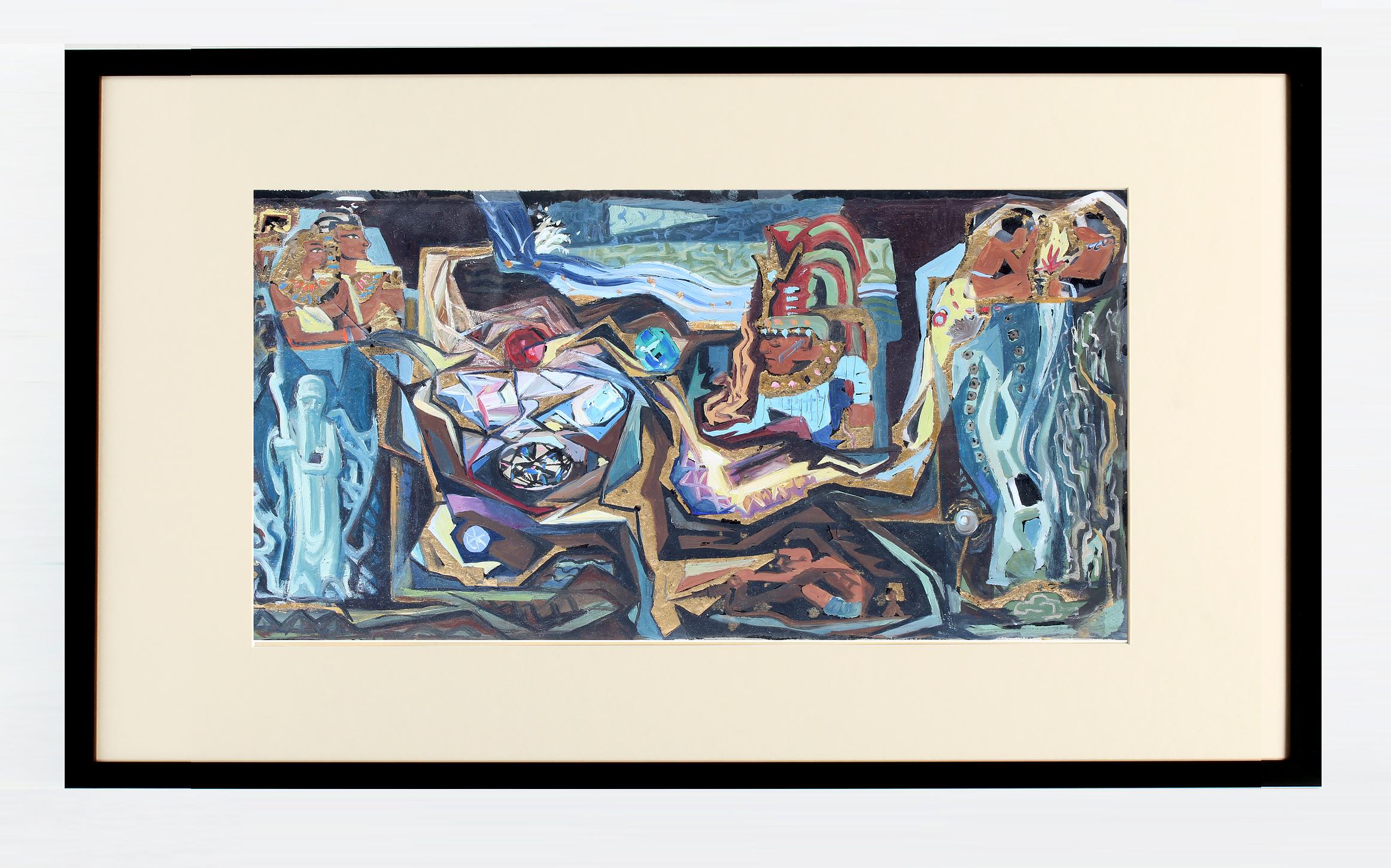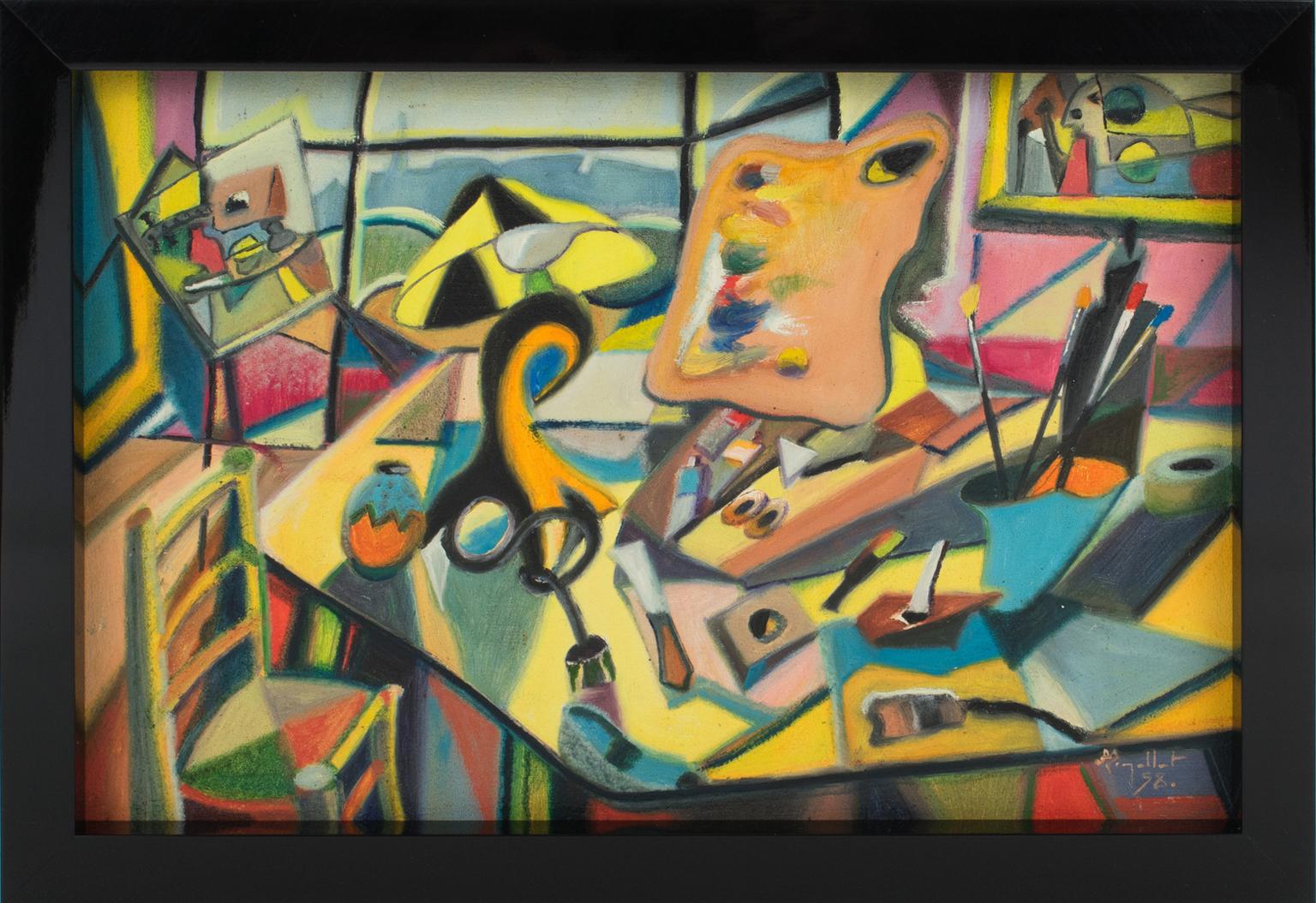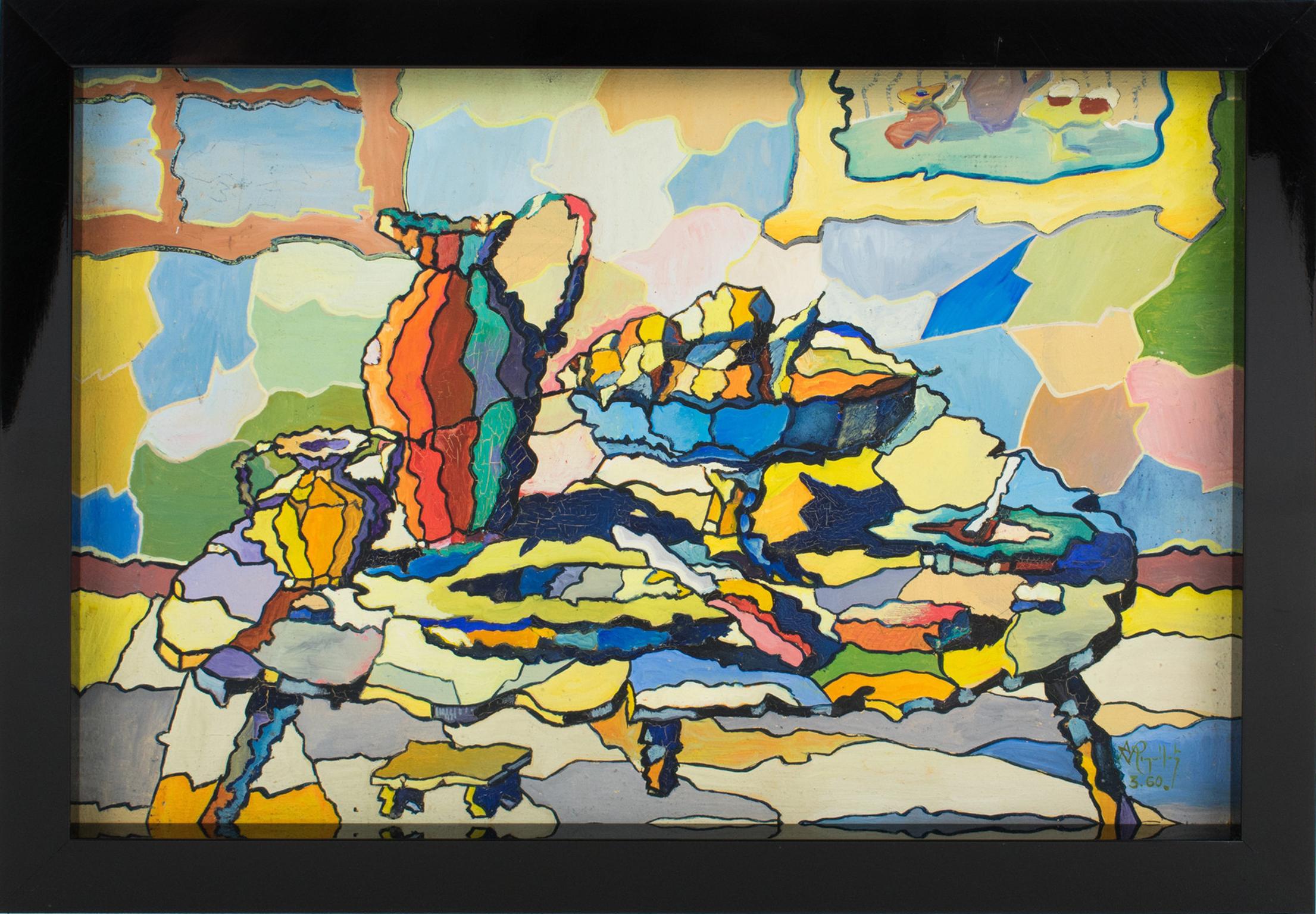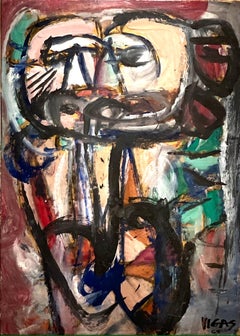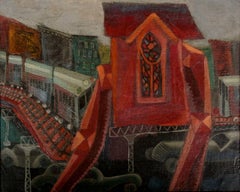
The Night Cathedral
View Similar Items
1 of 9
Alfred StatlerThe Night Cathedral1948
1948
About the Item
- Creator:Alfred Statler (American)
- Creation Year:1948
- Dimensions:Height: 22.25 in (56.52 cm)Width: 26.5 in (67.31 cm)Depth: 1 in (2.54 cm)
- Medium:
- Movement & Style:
- Period:
- Condition:
- Gallery Location:Minneapolis, MN
- Reference Number:1stDibs: LU1222434992
You May Also Like
- "Tabac" Charles Green Shaw, Tobacco, Smoking, Park Ave Cubist, AAABy Charles Green ShawLocated in New York, NYCharles Green Shaw Tabac, circa 1935 Signed on the reverse Oil on canvasboard 5 3/4 x 8 3/4 inches Provenance: Washburn Gallery, New York, 1982 Private Collection (acquired from the above) Christie's, The Collector, October 20, 2021, Lot 307 Private Collection, Scarsdale, New York (acquired directly from the above) Literature: Hilton Kramer, "Charles Shaw: In the Minimal Tradition," New York Times, February 21, 1982, Section 2, p. 25. Charles Green Shaw was born in 1892 to a wealthy New York family. He lost both his parents at a very young age; his mother died when he was just three years old. Despite the early loss of his parents, Shaw lived the whimsical life of a New York socialite. As a beneficiary to an inheritance based in part upon the Woolworth fortune, he was brought up surrounded by the well-bred, well-groomed and well-moneyed citizens of New York’s elite social class. His social status as an adolescent was cultivated while spending summers in Newport and attending Christmas balls at Mrs. W.K. Vanderbilt’s. At age six, Shaw began to take an interest in drawing, and by nine, he was known to have a fondness for sketching historical costumes. After graduating from Yale University in 1914, Shaw spent a year studying at Columbia University’s School of Architecture. Subsequently he served for eighteen months as a Lieutenant in World War I. After his service, Shaw returned to New York and tried his hand as a businessman selling real estate, but his attempt was short lived. In the early 1920s, Shaw began his career as a journalist and novelist. He achieved professional success, writing consistently for magazines such as The New Yorker, Vanity Fair and The Smart Set. Shaw’s writing was a record of his approvals and disapprovals of the social crowd to which he belonged. His profession along with his social pedigree, brought him in contact with a number of the most significant figures of the 1920s such as, F. Scott Fitzgerald, Sinclair Lewis, George Gershwin, George Jean Nathan and the American artist George Luks. Some of his profiles included celebrity caricatures used as illustrations, these were the publics’ first look at Shaw’s artistic ability. In 1928, a collection of Shaw’s articles and interviews were published in one volume titled, The Low Down. Just previous to the stock market crash and the end of the Jazz Age, Shaw left New York and traveled to Paris and London. He arrived in Paris in 1929. In an autobiographical note Shaw suggests it was on this trip when he first began to paint seriously. London also acted as a great source of motivation for the budding artist. He began to sketch everyday in St. James’s Park, making large pastels of its vistas in the style of Cezanne. When he returned to New York in 1932, Shaw considered himself a painter. Success for Shaw came quickly with his first solo exhibition mounted at the Valentine Gallery in 1934. The following year Albert Eugene Gallatin included works by the artist in an unprecedented solo exhibition at his Gallery of Living Art at New York University. Shaw further cemented his reputation as an artist through his association and friendship with fellow abstract artists Morris and Gallatin. The trio soon was regarded as ‘the Park Avenue Cubists’. As a founding member of the American Abstract Artists, Shaw became an impassioned defender of the style. His 1938 essay in the American Abstract Artists yearbook, “A Word to the Objector”, acted as a defense against those who failed to see the illustrative quality of abstract art and scolded those who disregarded American artists as serious Abstractionists. He was also an influential force at the Museum of Modern Art, where he sat on the Advisory Board from 1936 to 1941. In the later years of Shaw’s life he continued to produce abstract paintings, yet in a more private manner. He was known to be a reserved man— a ‘gentleman’; not much is known about his personal life in these later years. During this time he maintained his career as a writer, publishing the well-known children’s book, It Looked Like Spilt Milk in 1940 and two books of poems in 1959 and 1962. In 1974, Shaw died...Category
1930s Cubist Landscape Paintings
MaterialsOil, Board
- BelisamaBy Oswaldo VigasLocated in Palm Beach, FLPredominantly recognized as a self-taught painter, he also worked in architectural murals, sculptures, ceramics, prints and drawings. Vigas is one...Category
1960s Cubist Figurative Paintings
MaterialsCanvas, Oil, Gouache, Board
$160,000 - Untitled, 1965By Oswaldo VigasLocated in Palm Beach, FLPredominantly recognized as a self-taught painter, he also worked in architectural murals, sculptures, ceramics, prints and drawings. Vigas is one...Category
1960s Cubist Figurative Paintings
MaterialsCanvas, Oil, Gouache, Board
- Robert Marc - Untitled (9690), cubist, post cubism, french, collage, abstractBy Robert MarcLocated in London, GBRobert Marc (French, 1943-1993) Untitled (9690) collage 36 x 55 cm (14⅛ x 21⅝ in.) signed ‘ROBERT MARC’ (lower centre) Price: £9,000 GBP Provenance: Estate of the Artist Forum Gall...Category
20th Century Cubist Abstract Paintings
MaterialsCanvas, Oil, Cardboard
- "Nature morte" Bela de Kristo, Mid-century Cubist Still Life Abstract CelloBy Bela De KristoLocated in New York, NYBela de Kristo Nature morte, circa 1956 Signed lower right Oil on board 19 5/8 x 11 3/4 inches Provenance: Alexander Kahan Fine Arts, New York Private ...Category
1950s Cubist Still-life Paintings
MaterialsOil, Board
- Abstract Pink Cubist FaceBy Daniel David FuentesLocated in Soquel, CAStriking abstract pink cubist face by Daniel David Fuentes (American, 1978-2016). From a collection of his works. Signed "Fuentes" upper right in pencil, f...Category
21st Century and Contemporary Cubist Figurative Paintings
MaterialsCotton Canvas, Oil, Cardboard
$700 Sale Price20% Off
Recently Viewed
View AllMore Ways To Browse
Abstract Cityscape 1960s
Warhol Cathedral
Alfred Statler On Sale
Framed Glass Art Sculpture
Group Of Seven Art
Circle Texture
Blue Abstract Flowers
Further South
German Santa
Small Abstract Expressionist Painting
Circular Painting
Haute Couture Art
Cloth Painting
Quebec Canada
Abstract Cityscape
John Grant
Abstract Painting On Mirror
Small Size Abstract Painting
